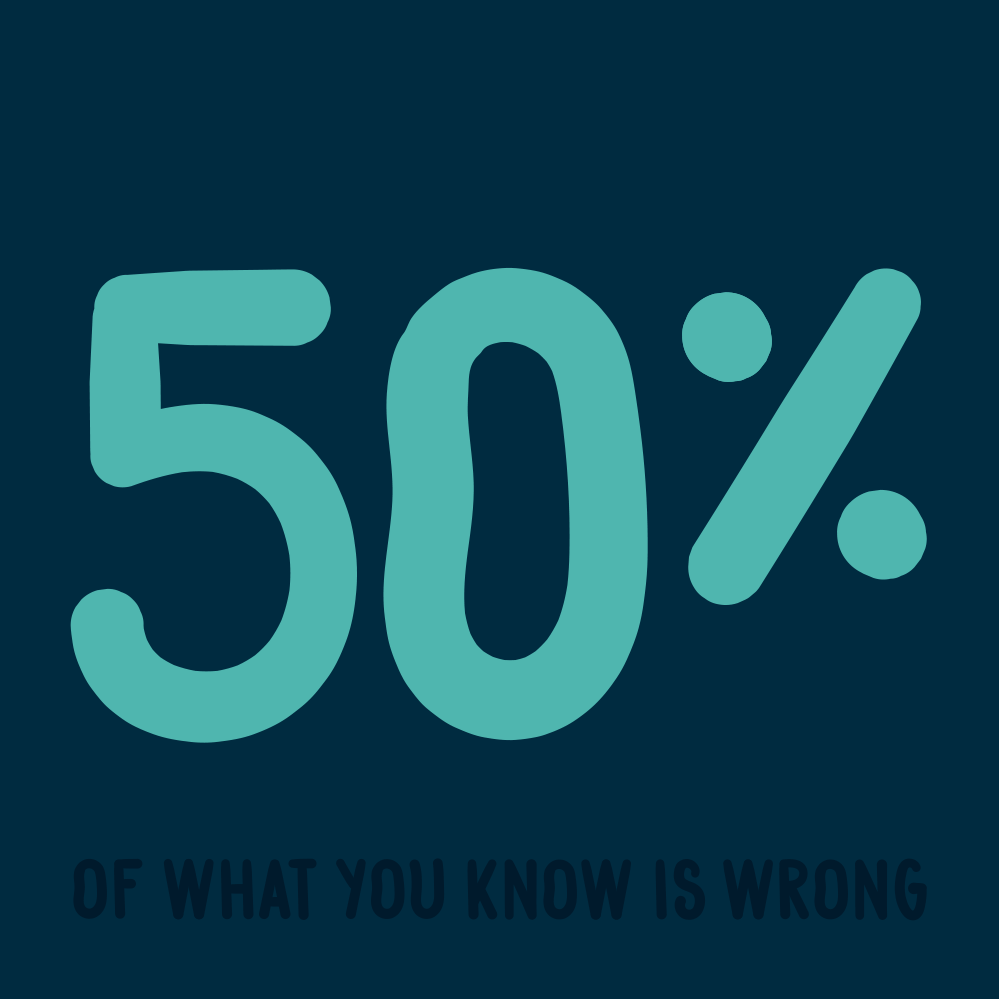50% of what you know is wrong
I’ve always been somewhat chagrined about the careless way the advertising industry and its creative directors have (historically) shrugged when asked about the effectiveness of their campaigns. Kind of like God, advertising was accepted to work in unknowable, mysterious ways.
‘Pioneer of marketing’ American department store magnate John Wanamaker (1838–1922) is apparently credited with the invention of the price tag (what, there was a time when we didn’t have price tags?) and—more relevant to this conversation—is also credited with coining perhaps the most famous advertising saying of all time: “Half the money I spend on advertising is wasted; the trouble is I don't know which half.” Or (as ad man David Ogilvy claims) maybe Lord Leverhulme said it? The ad industry seems content with 50/50 odds for even the source of the quote.
For many years I thought this was a particular failing of the ad industry: that we lacked the rigour and research required to understand advertising’s effect, but also that some of the things advertising influenced (such as “brand awareness”) were difficult to rigorously measure and follow (humans are notoriously bad at both explaining and understanding why we do things, including our purchasing choices). Surely, a more scientific field would have much higher confidence rate in its methods and facts?
I was trying to Google search the source of the 50% advertising quote, and came across another quote, in a completely unrelated and unexpected field: medicine. Former Dean of Harvard’s Faculty of Medicine Dr. Charles Sidney Burwell said the following to his students: “Half of what we are going to teach you is wrong, and half of it is right. Our problem is that we don't know which half is which.”
Unnerving, right? Not only in terms of its frightening similarity to Wanamaker/Leverhulm’s quote but also in that the medical field feels like a much higher stakes arena than advertising – certainly one that has more significant, extensive and thorough research backing it up.
Scientist Samuel Arbesman (in his book The Half-Life of Facts, which I’ve now added to my list of Books to Read) suggests that “The half-life of truth [is] 45 years” – in other words, “facts” from 45 years ago probably wouldn’t hold up today, and the facts of today will most likely be proved inaccurate or incorrect 45 years in the future.
Half of advertising doesn’t work. Half of what doctors know is wrong or inaccurate. The scientific facts you learned in high school will have most likely expired by the time you turn 55 (the latter which I admittedly find incredibly validating for my internal rebellious teenager).
Overall, I find this half-full confidence rate kind of… freeing. Holding all my beliefs a little looser encourages a curiosity about the world that’s thrilling in its possibilities, and perhaps useful in a world currently split by ideological battle lines.
It also makes me wonder… which 50% of what I currently believe to be true is just plain wrong? I hope it’s the part that says chocolate is bad for you.






